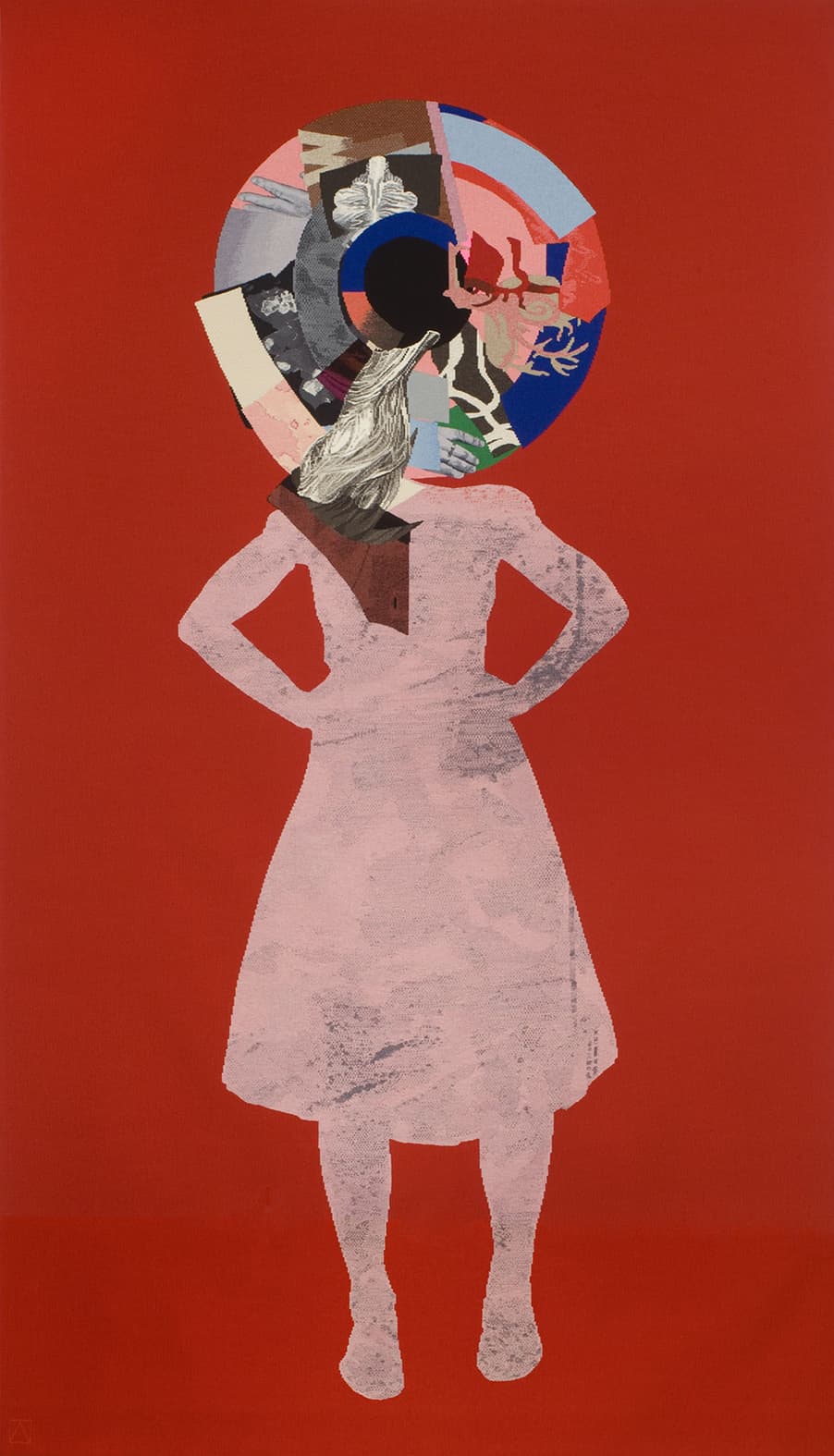




Leading Australian artist Sally Smart designed Eye Desire in 2011 specifically for the foyer of the Royal Women’s Hospital in Melbourne.
Smart has as established reputation as one of Australia’s leading feminist artists. Her playful works belie a thoughtful, considered approach to the world around her. Smart theatrically reworks traditional materials and techniques, including felt and paper cut-outs, to signify a revaluation of their traditional status as low art.
Smart designed the tapestry specifically for the hospital. The hospital sees a cross section of the community go through its doors, as patients, visitors, healthcare workers, stakeholders and volunteers, all from multiple cultural and economic groups. Smart’s design utilises fragmented figurative elements and medicinal imagery to construct a robust and active female form.
Through the design process Smart noted that when thinking about the meanings of the world “inevitably the discourse begins with the body, a forensic activity, an external and internal examination of the body environment: clothes, house, furniture, landscape. This becomes an anatomy lesson; where dissected parts are examined and reconstructions are made for explanations. “[1]
This tapestry is one of a number of ATW tapestries in hospitals throughout Victoria. Artworks in hospitals offer a unique opportunity for the artist to provide a point of reflection for the viewer during what may be a stressful time. This powerful, assertive tapestry will provide an affirmative focus point for clients and visitors to the Royal Women's Hospital.
The main challenge presented by this project for the weavers was the site. The hospital has a subdued palette, and the weavers wanted to make sure the environment did not absorb the tapestry. The vivid design provides energetic, contrasting colours and textures. The weavers worked closely with ATW dyer Tony Stefanovski and the artist to create a palette for the tapestry that would hold its own in the cavernous foyer interior.
The weavers have used a half pass technique in the pink body areas. After visiting the site with samples, they decided to use a flat strong and vibrant red for the background, because the completed tapestry will be viewed largely through tinted glass, lessening the vibrancy of the colours.
The tapestry will also be viewed from the ground floor of the hospital foyer, the mezzanine level and through multiple levels of office windows. Once the weaving team had made the cartoon for this project and were able to lay it out to realize the scaling, they identified the need to extend the figures legs slightly to address the foreshortening that occurs when the figure is distorted when viewed from below. After discussions with the artist, Smart redrew the dress and legs, lengthening both of them, while maintaining the balance of the form in the tapestry.
This tapestry was generously supported by Anne and Mark Robertson OAM through the Tapestry Foundation of Australia.
Sally Smart’s work is housed widely in national and international collections.
[1] http://nga.gov.au/tales/Sally.cfm